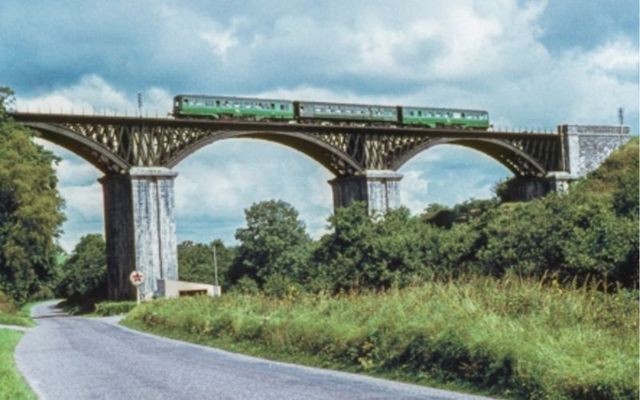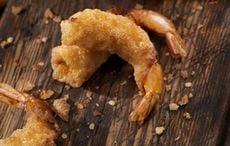Doesn’t everybody long for that bit of nostalgia, not only for events or places in our own past but, perhaps, is there something in our DNA that makes the Irish hanker to relive the experiences of our ancestors? Visit where they came from? See the ships they sailed on? Stand on the railway platform they embarked on their initial road to immigration?
One hundred years ago, the West Cork Railway was in its heyday. The political lobbying of the automobile industry has been blamed for its demise, the financially powerful road lobby was extremely successful in their movement against the Irish railways.
However thanks to railway enthusiast Chris Larkin, we are now given the opportunity to go back to this railway heyday by immersing ourselves in his travelogue. Over the last 50 years, avid collector Larkin has amassed a large collection of West Cork railway memorabilia, which he has chosen to share with us in his publication "West Cork Railways – Birth Beauty and Betrayal".
Rail enthusiast and author Larkin felt the memory of the West Cork Railway was neglected. In an effort to rectify this he published "The West Cork Railways", and it has proven an excellent remedy as the railway is carefully documented in this magnificent collection of contemporary photographs and slides. Photographs, vintage posters, postcards, color slides, tickets, advertisements and railway objects fill the pages together with his own art and poetry, an invaluable source of social history.
This colorful publication allows the reader time-travel around West Cork from the famine right through to the rocking 1960s. It immerses you in West Cork villages and towns, carrying along the dreams, needs and aspirations of bygone travelers.
Read descriptions of various stations, locomotives, wagons and length of lines, and enjoy the social history of it all; stories of employees and their ‘rail way’ of life which included dogs, cats, hens, ducks and geese at the level crossing halt-keeper’s houses.
Most West Cork rail stations had public houses nearby. The author claims all of these wonderful community pubs often saw interesting – and famous – visitors, many outlined within the pages. Historic Dunmanway’s Michael O’Donovan’s Shamrock Bar still boasts a vintage railway poster and other railway relics.

Love Irish history? Share your favorite stories with other history buffs in the IrishCentral History Facebook group.
Chris Larkin describes the West Cork line as the result of brave, far-sighted and civic-minded people who brought Cork and Munster directly into the 20th century with a then-state-of-the-art, inter-connecting railway system. The enterprise proved so popular that Bandon became a Mecca for horse-drawn coaches, eager to offer train travelers the option of traveling on to places further west, like Skibbereen, Bantry and Glengarriff.
The railway served Kinsale, Bandon, Dunmanway Skibbereen, Macroom, Clonakilty, Drimoleague, Timoleauge, Bantry, Schull and countless other towns and villages around West Cork each individually outlined in the book. Due to the proximity of the army barracks, Ballincollig station handled heavy goods and military traffic. Arms, ammunition, horses, food, linen, tools, newspapers and various supplies came by rail. Rail tickets to Ballincollig had nicknames: the ‘Brit pass’ was a military ticket, while the ‘Paddy pass’ was a ticket issued to locals.
The Great Southern Railways was formed in 1924, the amalgamation of The Great Southern, Western and various other railway companies.
Industry
Farming was a railway constant, involved in the transport of horses, cattle, donkeys, pigs, poultry and dogs from farm to village, town and city. County fairs, such as Bantry and Macroom were expertly catered for by trains consisting of locos with open wagons, closed wagons, flat wagons, cattle wagons and horse boxes. Similarly, barley, wheat, corn and other grains were carried from Bandon, Macroom, Crookstown, Shannonvale all over Ireland. Sand and beet were transported from Courtmacsherry and Timoleague to the rest of the country.
Flat wagons from the Henry Ford & Son plant at Marina in Cork brought Fordson Major tractors, Thames Trader trucks and Anglia vans to both farmers and creameries alike, as well as the Consul 375 (1960s Ford designed car.) Farm machinery and veterinary supplies came from far and wide via Glanmire Road railway station. Wool from sheep, eggs from hens, milk from cows, butter, cheese, etc., were rapidly carried to customers all over the country.

Love Irish history? Share your favorite stories with other history buffs in the IrishCentral History Facebook group.
There are accounts of railway workers’ anti-social hours. The Mallow Sugar Beet factory saw work begin at dawn, with both silver metal and grey timber wagons coming from places like Ballinascarthy and Clonakilty Junction. These CIÉ railway men were nicknamed ‘the night owls’ as the beet operation’s West Cork-to-Mallow specials only ran at night.
The first West Cork special was followed at the Mallow Beet factory by a Midleton special with 200 tons of beet. The green CIÉ locomotive was uncoupled and replaced by a German-made sugar company locomotive. Two methods were used to unload the beet: a rusty grab crane unloaded five wagons per hour, alternatively, a huge water gun that produced a powerful jet of water forced the beet out of the wagon, all used to feed the cattle of Ireland. Up to 2,000 tons of beet passed through the factory every day.
Tourism
In 1858, Edward Prince of Wales decided to travel the West Cork rails. On arrival in Cork, he traveled in a royal blue horse-drawn coach to Albert Quay.
Laurels were brought up from Innishannon to decorate the station concourse. The band struck up marching music while guests enjoyed tea, cake, gin and fresh Caviar prior to departure. Local police and military were furious over the hype because scores of men had to be drafted in to protect the route from Albert Quay to Bandon.
A gang with cudgels was beaten off with gunfire at the Abbey Bridge outside Waterfall. A sergeant known as Buckshot Bill shouted ‘Give them the lead’. Later, the company promoted the ‘Prince of Wales route’ between Cork and Killarney presenting West Cork as a must-see destination.
Cork tourism got another boost during the 1880s when the Bantry Bay Steamship Company ran two goods and passenger ships, the Lady Elsie and Princess Beara, from Bantry Pier to Glengarriff and Castletown Berehaven. The Lady Elsie was always escorted into the harbor by the local dolphin, nicknamed Florrie Batt. The steamship company’s original building still stands on Glengarriff pier. The recently revived term ‘The Wild Atlantic Way’ was coined in Glengarriff’s Eccles Hotel during the 1890s by a tourist.
CIE
Córas Iompair Éireann (CIÉ) was established in 1945. Chris states CIE was an environmental operation, with two-tone livery on their trains, trucks, buses, buildings and ships. He describes a corporate masterclass with the addition of their logo: the winged wheel. Many designers believe that this logo was on the same level as the world’s best commercial logos, Ford, Shell, Coca Cola, Guinness, Aer Lingus Mercedes Benz and the like. When CIE Chair Courtney resigned as chairman of CIÉ in 1958, it was the end of an era.
The West Cork line, like many others in the Irish railway network, was destroyed very rapidly. If it had been delayed until Ireland’s European Economic Community entry in 1973, the railway would have preserved, a right of way for future generations. In Ireland, motorways now rule, and we can be nostalgic in more ways than one; we know now that electric-powered railways are a much better friend to planet Earth’s, emitting less dangerous greenhouse gases.
* "West Cork Railways – Birth Beauty and Betrayal" is available online internationally and also widely from Irish bookshops - or directly from the publisher (Ireland and UK sales only) at MercierPress.ie.
This article was submitted to the IrishCentral contributors network by a member of the global Irish community. To become an IrishCentral contributor click here.




Comments